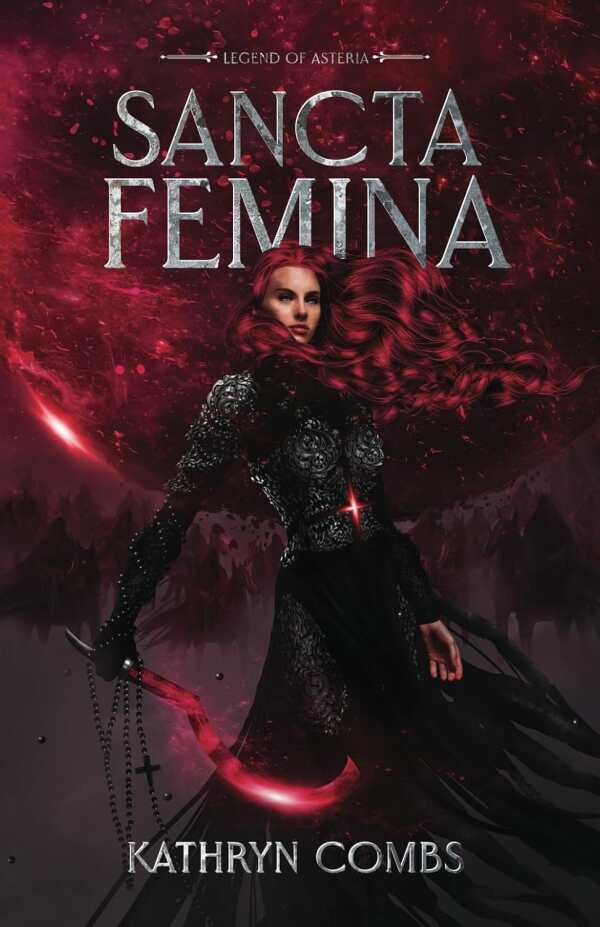Sancta Femina
Legend of Asteria
The future is uncertain in the postapocalyptic series opener Sancta Femina, in which a heroine joins a fight against inhumanity.
The nature of faith in a fractured universe is explored in Kathryn Combs’s justice-fueled science fiction novel Sancta Femina, in which an orphan is caught up in a holy war.
Abandoned by her family, Hella found refuge in the military. But a religious zealot, Abramovich, believes that Hella is the genetic clone of a spiritual figure from Earth’s ancient past. Just as she returns to Earth, he triggers a nuclear blast. Hella awakens in a crashed cryogenics escape pod and learns that Abramovich wants to use her to control the remnants of humanity. With the help of a cybernetic dog, the hologram of a long-dead girl, and her own wits, Hella escapes him, though.
At first, Hella’s story seems to be a survival tale: She’s on a hellish planet with no means of escape. During her imprisonment, she trains to fight and manipulates information. Later, she faces escalating danger as she strives to understand her heritage and her place in the dawning holy war. She explores a transformed universe, confronting and exploring faith, technology, and the nature of humanity. Assaulted, left for dead, and worse, Hella endures, hoping to save humanity and better understand the new moral codes of the evolving human race.
Evocative depictions of barren landscapes highlight the harsh, unyielding nature of the strange new worlds. After Hella flees the icy planet Abramovich has held her captive on, she encounters unusual worlds where humans thrive in the face of unrelenting environmental hazards. At first most concerned with survival, she develops a desire for revenge against Abramovich.
Hella’s viewpoint dominates. An orphaned clone, seasoned warrior, and touted mythological heroine, she engages in introspection during her lengthy travel between planets. These contemplative periods exist in stark contrast to the book’s action scenes, together building a narrative rhythm. And backstory is established via conversations, during which people fill Hella in on what she has missed and she muses on the information she’s received. The key factions of the holy war, and its stakes, are established in the same manner, laying the groundwork for future volumes. After Hella has faced down other horrors, she endures a showdown with Abramovich, leading into a cathartic ending.
In the series-opening science fiction novel Sancta Femina, a headstrong survivor navigates the emotional and physical devastation of a fractured universe.
Reviewed by
John M. Murray
Disclosure: This article is not an endorsement, but a review. The publisher of this book provided free copies of the book and paid a small fee to have their book reviewed by a professional reviewer. Foreword Reviews and Clarion Reviews make no guarantee that the publisher will receive a positive review. Foreword Magazine, Inc. is disclosing this in accordance with the Federal Trade Commission’s 16 CFR, Part 255.

